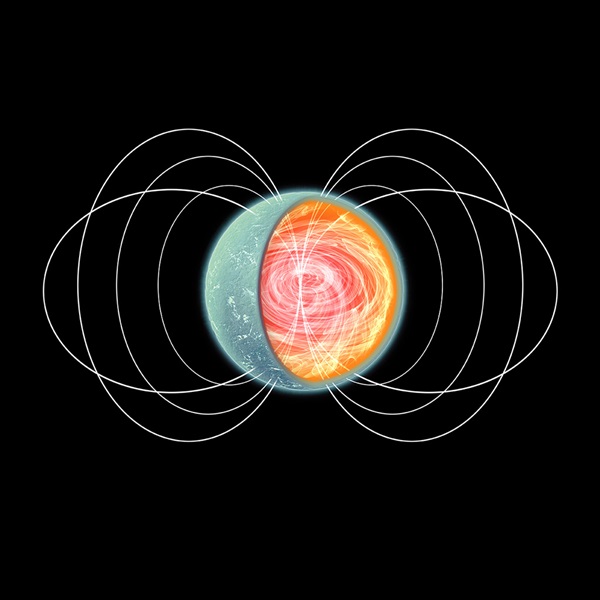Key Takeaways:
The magnetic fields of stars and planets typically arise from “dynamo” processes that involve local currents generating an overall field. For example, the dynamo involving currents near Earth’s core produces a field that is misaligned with our planet’s rotation axis.
Astronomers don’t yet understand how neutron stars’ magnetic fields originate. We know that the suns that will eventually become neutron stars can generate magnetic fields through convective dynamo processes, which are collective fluid-like motions of charged particles that generate a field. However, it is unclear if a neutron star’s magnetic field comes from this “fossil” field condensing as the star’s core collapses or if a new field is generated during the core collapse (while the rest of the sun explodes as a supernova).
If a supernova explosion is asymmetrical, some of the energy also can affect the rotation of a new neutron star and give it high velocity — a process that we call a “kick.” For example, we know that these kicks can fire newborn neutron stars away from their birthplaces at potentially hundreds of miles per second. If the kicks occur slightly off-center, they also can impart a completely different rotation axis to the neutron star than that of the original star.
McGill University, Montreal










